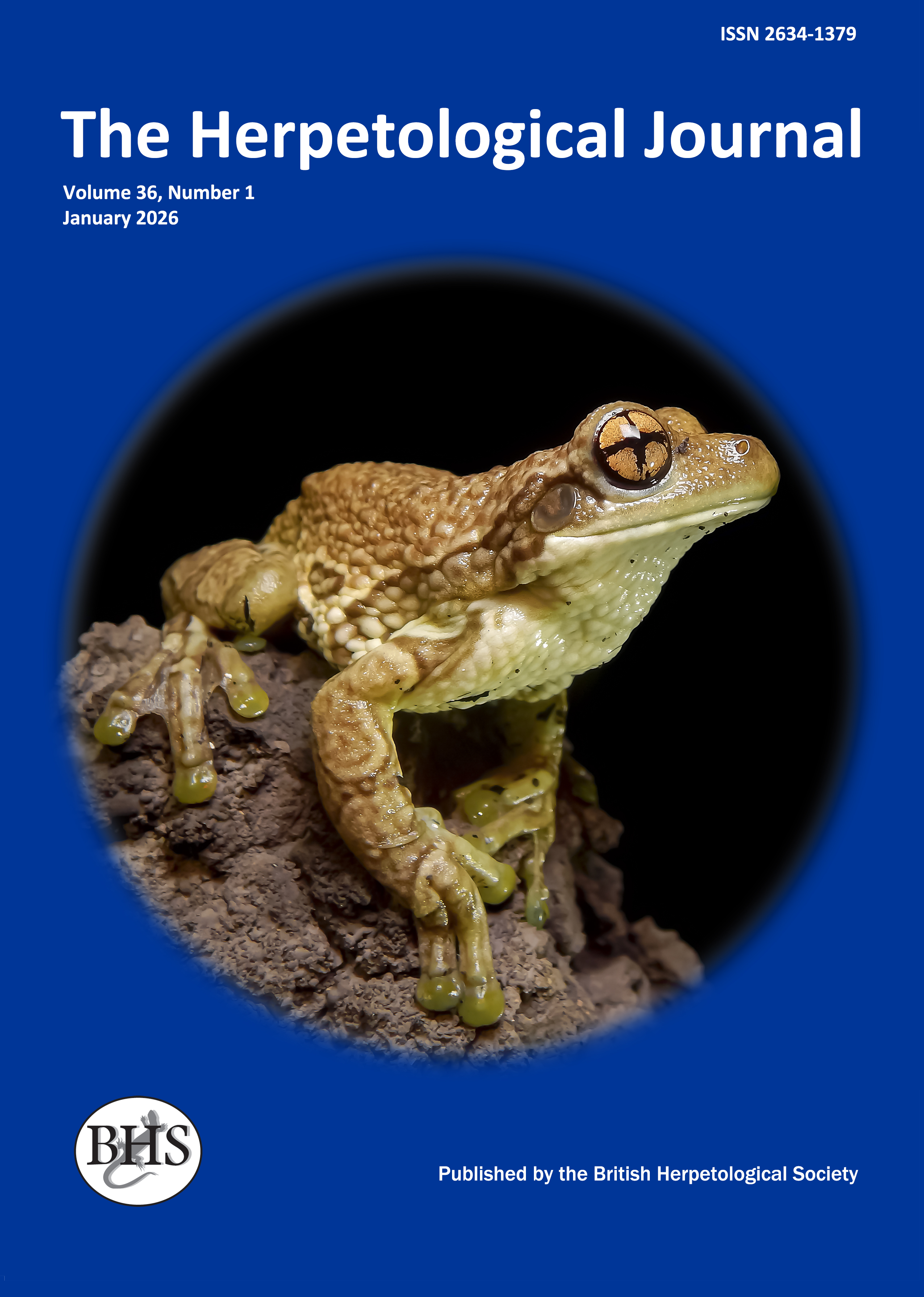
The Herpetological Journal
The Herpetological Journal is the Society's prestigious quarterly scientific journal. Articles are listed in Biological Abstracts, Current Awareness in Biological Sciences,Current Contents, Science Citation Index, and Zoological Record.
ISSN 0268-0130
2023 Impact Factor for the Herpetological Journal is 1.1, with the Journal sitting just below Quartile 2 in Zoology, at percentile 46.9
pdf 06. Feeding and digestion in the omnivorous estuarine turtle Batagur baska (Gray)
3137 downloads
Open Access
pp.133-139
Authors: John Davenport, Tat Meng Wong And John East
Abstract: The emydid river terrapin Batagur baska (colloquially known as the tuntong) lives in rivers and estuaries of S.E. Asia. The species is omnivorous, but predominantly herbivorous from the hatchling stage onwards. Young river terrapins (3-4 months; 140-200 g body wt) from a headstarting programme in western Malaysia were studied. Appetite on a plant diet (kangkong; Ipomoea aquatica: Convolvulacea) was extremely high ( 16% body wt d-1 on fresh wt basis); river terrapins spend long periods of browsing, using the double serrations of the upper beak to cut up plant material. The serrations also function in ratchet like fashion to allow large leaves to be progressively moved into the oesophagus without the turtle losing contact with the food. Batagur baska readily eats water hyacinth (Echornia crassipes), a plant which often chokes tropical waterways. River terrapins fed on trash fish move a meal through the gut more quickly (total gut clearance time, TGCT = 5 days) than do those fed upon kangkong (TGCT = 6 days). The gut features a large stomach, a small intestine of moderate length but large diameter and a capacious large intestine. The gut does not sort material. Assimilation efficiency on a diet of fish (mean assimilation of dry mass = 9 1 .6%, of energy (joules) = 90.5%, of protein = 97.4%) is much greater than on a diet of kangkong (43.2%, 38.6% and 66.0% respectively). [t is recommended that headstarted animals are regularly fed on fish to improve growth rates. River terrapins readily eat plant material in salinities between 0 and 1 9.8%0, but refuse to eat in water of 23. 1 %0 or more, presumably to avoid the incidental drinking of water with a higher ionic content than their blood.

